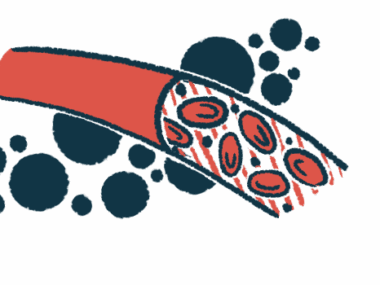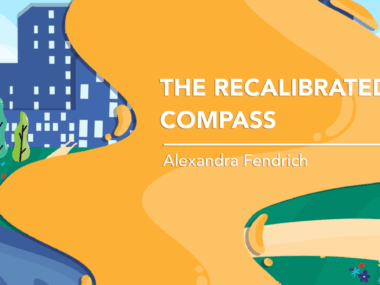My Ankylosing Spondylitis Diagnosis Journey, Part 2
Written by |

Second in a series. Read part one.
And then the symptoms hit. By 30, I had limited mobility in my back and hips, extremely stiff joints, horrible fatigue, serious morning immobility, chronic stomach distress, and costochondritis (inflammatory joint pain in the chest).
I finally went to the two best hospitals in New York City with my insurance (which I didn’t have for many years — and want to acknowledge the absolute privilege of having here in the U.S.) and was diagnosed. Two different doctors assessed me, and both saw minor fusion in my sacroiliac joints as well as elevated inflammation levels. Finally, the imaging machines could see what I was feeling inside!
At that time, I thought of all my spoonies. What about the people who can’t prove why they’re feeling so awful? Who can’t show their disease on an X-ray? Who get the runaround from doctors? Whose fatigue is called the “yuppie flu“? Who aren’t believed or heard? (In fact, studies show that marginalized groups often are not listened to when presenting with chronic health issues.)
With the diagnosis came extreme relief — and extreme grief. It was the end of the chapter of mystery. It was the birth of the new me. A stiffer, crankier, more aware me.
Living with AS symptoms for the past few years hasn’t been easy. In truth, it’s a lot of irritability, a lack of desire to go out, and less interest in my creative work. I’m a writer and a poet, and I’ve always been extremely prolific. (Um, let’s be honest: The term is “workaholic.”) But once the AS set in, all the go-go-going became a thing of the past.
On one hand, I don’t miss it. Having AS — and living each day knowing I may feel totally and completely differently — has made me slow down, take stock, employ self-care strategies, and live in the present. I take better care of myself. I have greater empathy. I advocate for myself and others in medical situations — and on the weird, wild internet, where trolls abound.
A year ago, I started a popular biologic treatment. For me, it just didn’t work. I got the shingles — yet another amazing (and very gross-looking) side effect of having a compromised immune system — and other infections. My doctor took me off of it. We are currently trying to decide my next step. For now, exercise has been moderately helpful in keeping extreme pain away.
In the end, this is a lifelong disease, and it’s part of me now. In many ways, it is me. In this column, I also discuss the grief and denial that comes with diagnosis, as well as reasons to find the light in the darkness. It’s inspired me to write articles and even books!
It was a long road, and I suspect that at 33, it’s going to be an even longer one ahead of me. I don’t know if I will become immobile or totally fused. I don’t know if my love for dance and travel will come to a halt. I do know that I’ll fight against it with every fiber of my being. And I know that readers like you inspire me to keep going.
Have comments or questions? You can always contact me at www.twitter.com/lisamariebasile or on Instagram at www.instagram.com/lisamariebasile.
***
Note: Ankylosing Spondylitis News is strictly a news and information website about the disease. It does not provide medical advice, diagnosis, or treatment. This content is not intended to be a substitute for professional medical advice, diagnosis, or treatment. Always seek the advice of your physician or other qualified health provider with any questions you may have regarding a medical condition. Never disregard professional medical advice or delay in seeking it because of something you have read on this website. The opinions expressed in this column are not those of Ankylosing Spondylitis News, or its parent company, Bionews Services, and are intended to spark discussion about issues pertaining to ankylosing spondylitis.






Nigel Antrobus
I am a man and I was diagnosed at 22. I was told it was unpredictable, but would eventually burn-out. I did indeed have ups and downs but for me it did improve, and at 74 it has virtually gone. Actually, the only drug that worked at all was butazolidin which had side effects. However the illness is a vulnerability and it does not completely disappear. The aches lurk in you. If some activity makes you hurt...do not do it!
Roxanne Mongeon
This sounds exactly like Lyme disease.